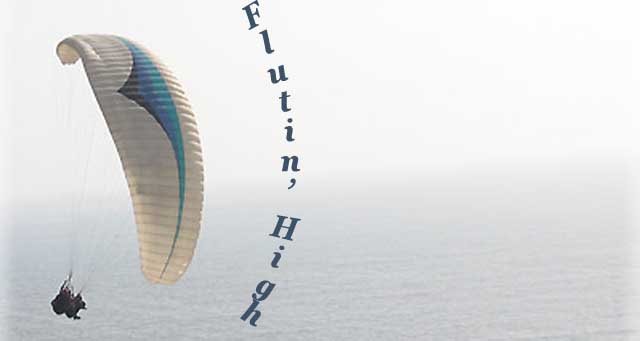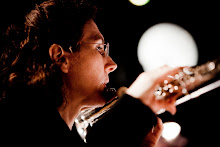 Twentieth Century pioneers in the realms of composition and performance have set the standard for us in terms of how high we are expected to play. For better or worse, we need to have fluency at least up to high D. Hmm, gee, thanks guys, I guess.......
Twentieth Century pioneers in the realms of composition and performance have set the standard for us in terms of how high we are expected to play. For better or worse, we need to have fluency at least up to high D. Hmm, gee, thanks guys, I guess.......Just do it. Play your normal scale and arpeggio routine up to high D. And the younger you start the better. That means now. Tomorrow you will be older. (If you need an online guide to possible fingerings for the flute, try here.)
Before launching please consider these tips. They will save you time and prevent injury. If you have any more to share, I am all ears (while I can still hear!).
• Wear earplugs during practice sessions including 4th octave. Loud noises can tire you just like muscular activity. Protect yourself from them, you will have more energy and be able to practice longer. The ordinary wax kind will do the job and are better than the foam ones because they nestle in your ear more snugly.
• Robert Dick's initial advice: get the angle of the air correct first by finding the whistle tone. Usually we need to be rolled out a bit more that we are used to. Then blow!
• Think of putting energy into your airstream, not your lips. The lips have to be firm to withstand the onslaught of air, but that's all. Don't try to create the sound with them, the source is down below. A quick focus on the muscles of your pelvic floor before you blow will help. They should move down a bit in contrary motion to the upward energy that comes with the air (as happens naturally when you cough).
• At first practice the fourth octave in your own dynamic, don't try to do extremes of loud or soft. What comes will come.
• Come down again! Don't spend too many consecutive minutes in your practice in the fourth octave without playing some in the first octave, or even just resting and not playing at all.
• And while you are resting: if the fourth octave passage is technically difficult and requires a lot of technical repetition to learn, finger the passage silently with the flute comfortably in your lap. Watch your fingers, concentrate on relaxed breathing, inhaling as well as exhaling, without any unnecessary stress or tension in your shoulders or hands. Combine this practice with actual playing.
• Watch intonation. In a repertoire passage, if tempo allows, choose fingerings that are as in tune as possible. If the passage is microtonal, I often use standard fingerings for notes that should be up to a quarter tone sharper in this octave, then play the "normal" notes with flattened fingerings.
• With a difficult repertoire passage, make a short exercise based on the 4th octave notes and include it in your daily scale and arpeggio practice. Then while practicing the piece, you will have time to work on musical aspects.
Some general remarks about dynamics:
Sometimes composers are kind and allow for the natural dynamic of the fourth octave (fff). Sometimes not. This is where you can go "virtual", that is, create the impression of a real piano even though the sound may be quite present. In some cases the struggle to play quietly is part of the composer's esthetic, or sometimes the composer just wants a diminishing of energy and will allow for a "relative" piano. Always ask if possible, don't knock yourself out trying to achieve perfection if the composer doesn't want it in the first place. If the composer really wants a true piano at that octave, do your best to keep the air up and not pinch, let go and allow a little airiness in the sound, it may still sound loud up close but it will carry less.
Photo: EPA stock photo

